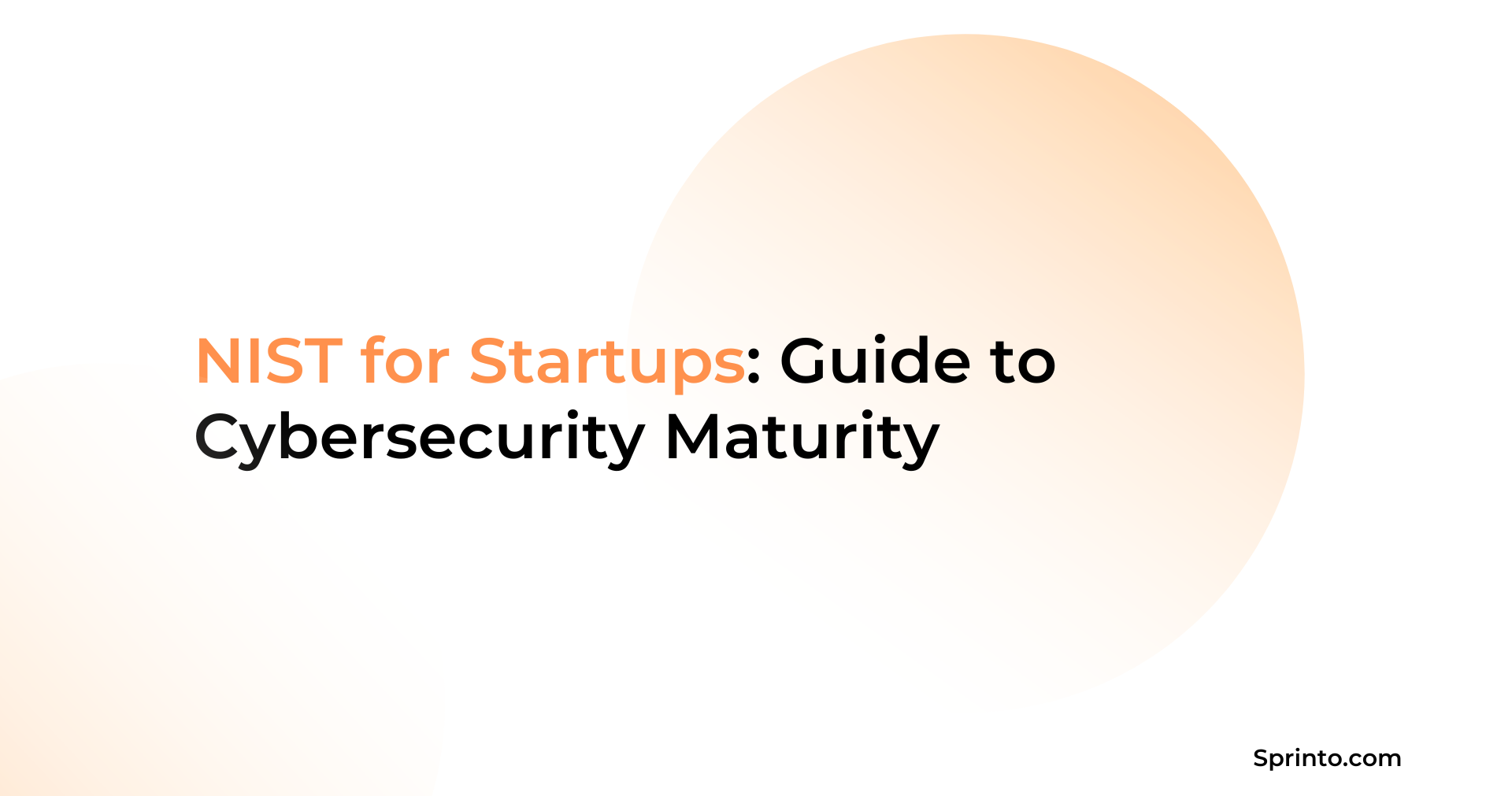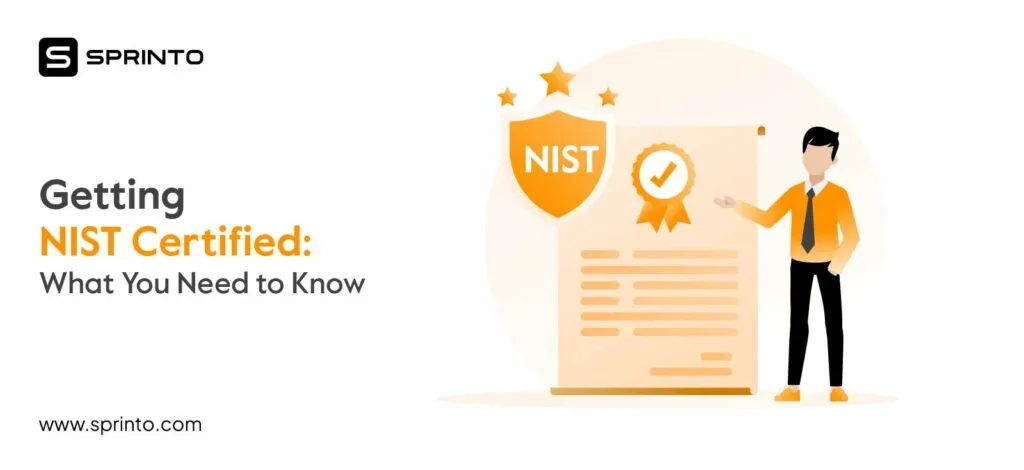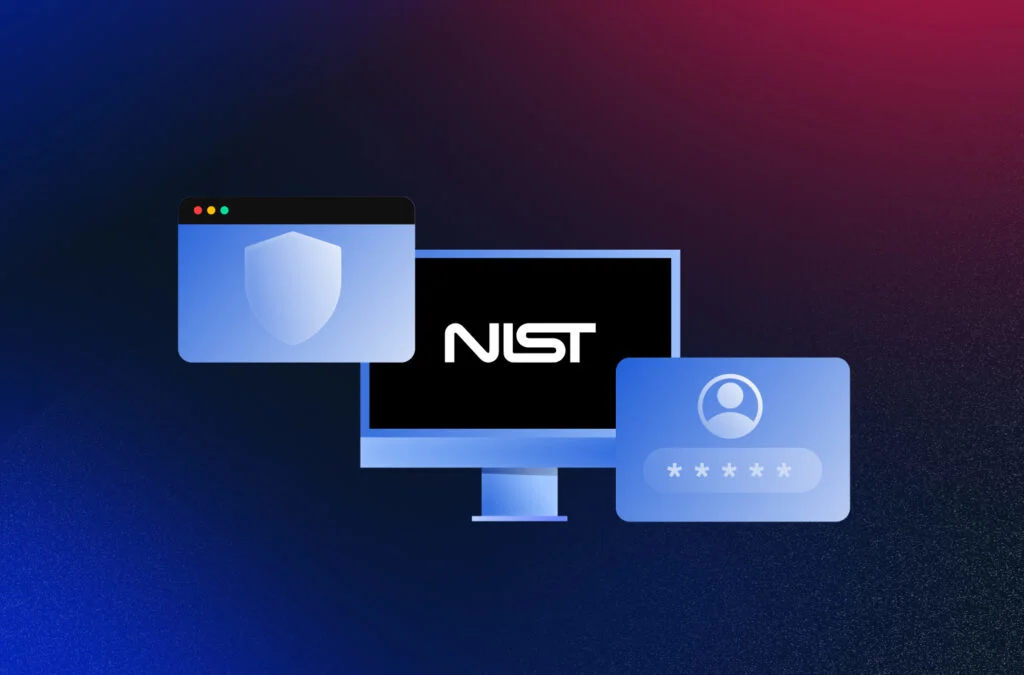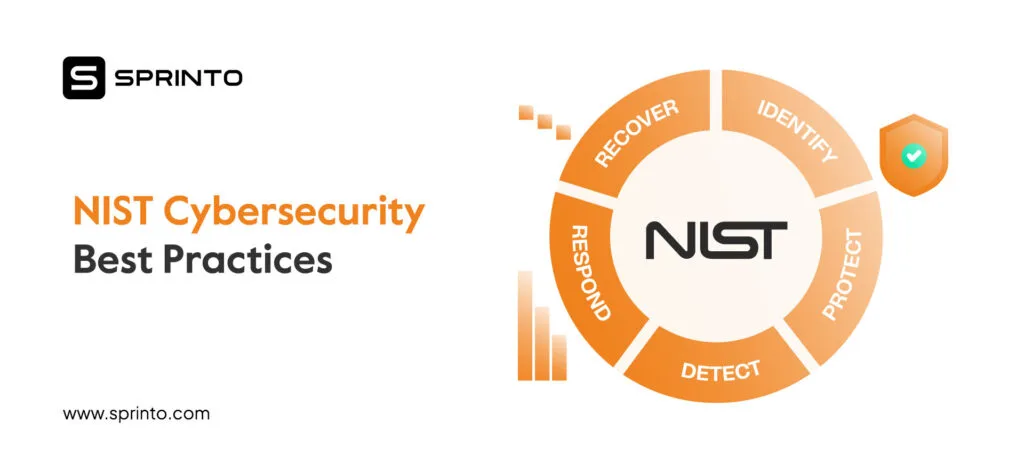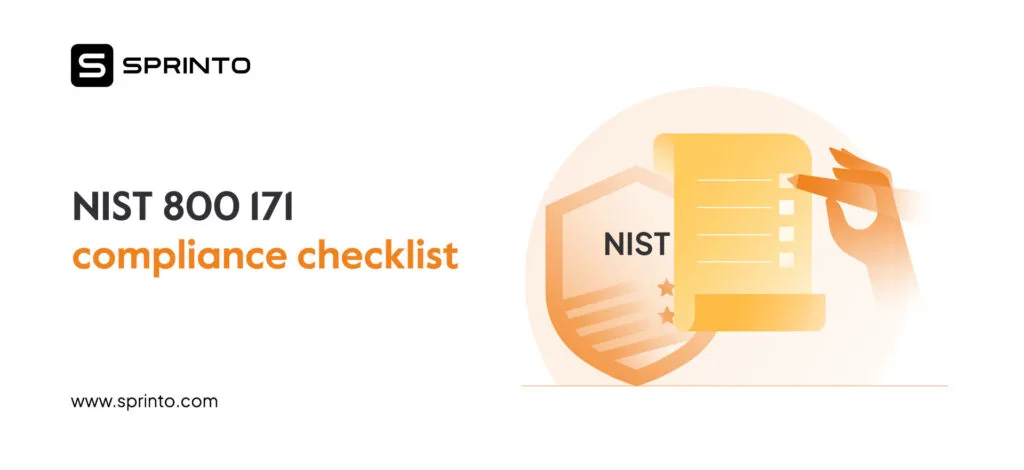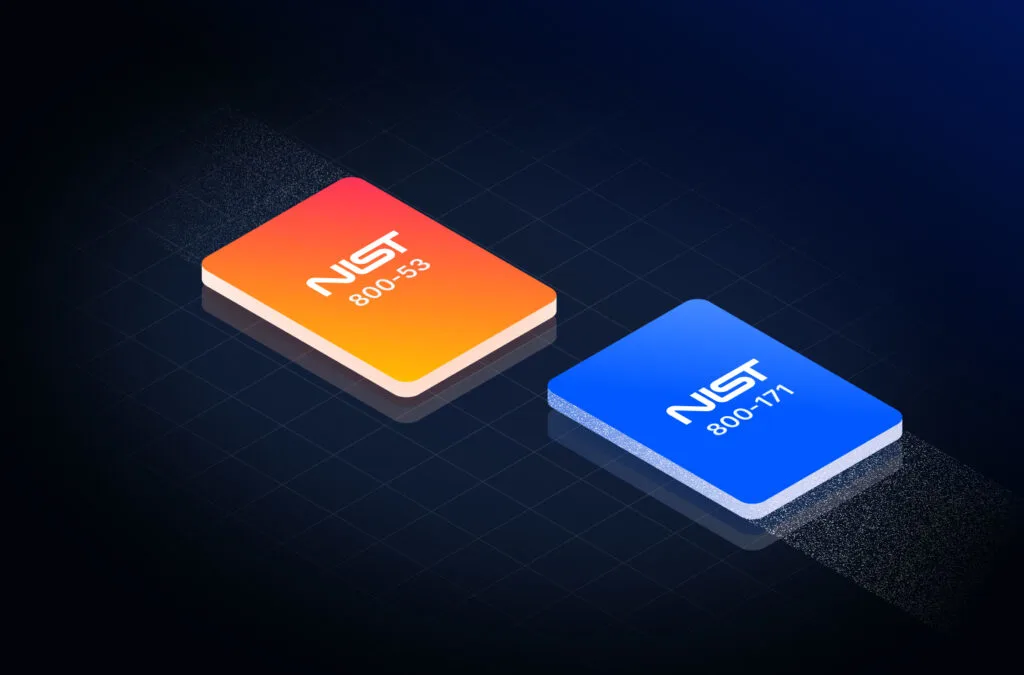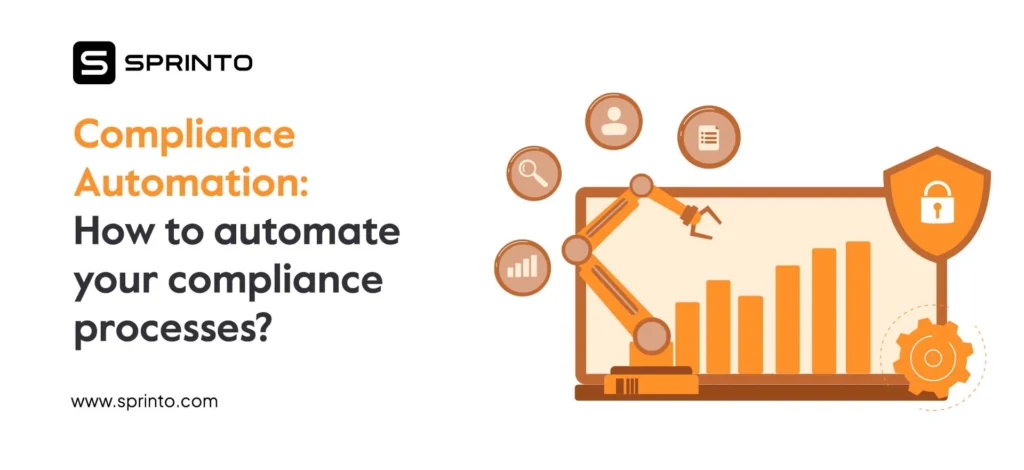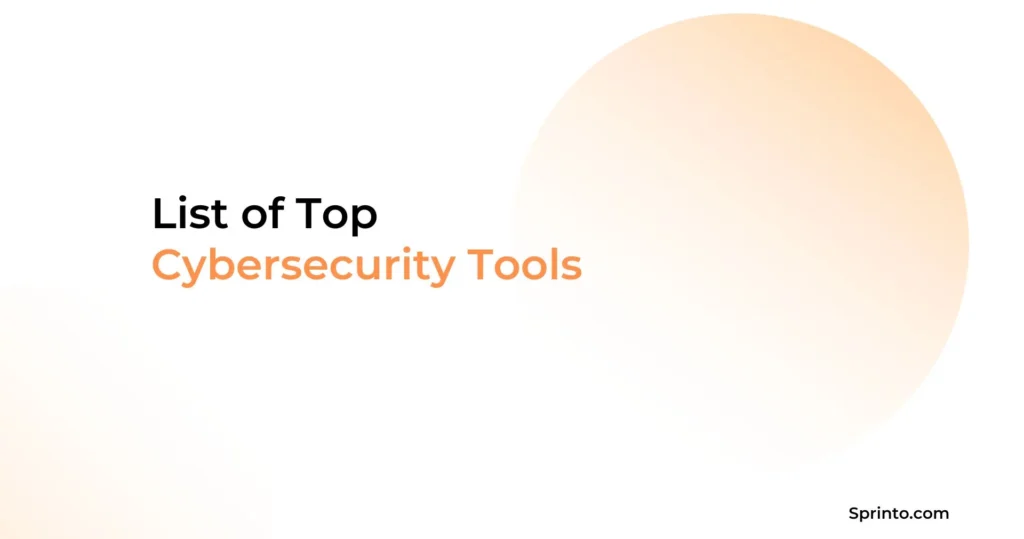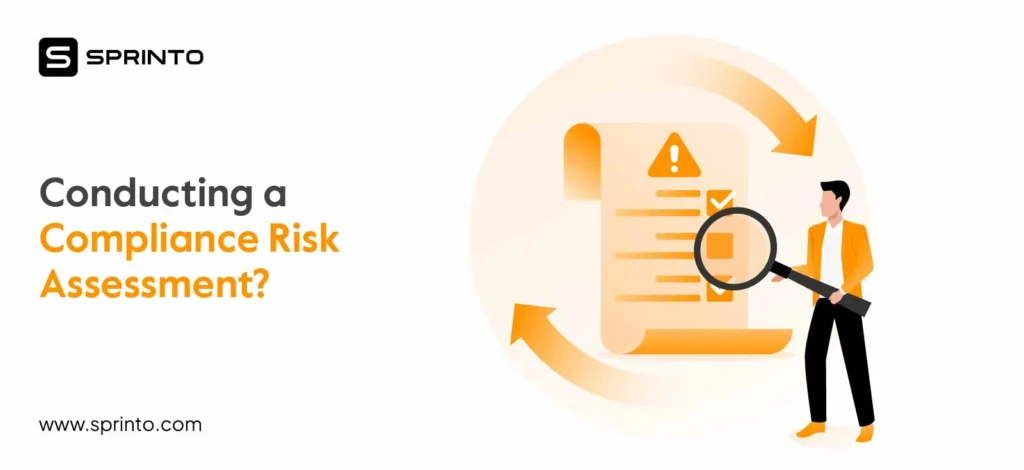When your team is scaling fast, security often takes a backseat to shipping. You’re pushing new features, fielding customer feedback, and juggling a growing tech stack.
But the moment you store user data, process payments, or plug in an LLM, your risk footprint balloons. This means that one single exposed API key can unravel months of work.
The NIST Cybersecurity Framework (CSF) allows you to build security without slowing down. It breaks down big-picture risk management into clear, actionable steps your team can automate, track, and scale as you grow. This article will help elucidate that in detail.
| TL;DR The five pillars of NIST CSF — Identify, Protect, Detect, Respond, and Recover — give you a vendor-neutral language for risk management. When you adopt NIST early, you establish a minimum-viable security baseline and reassure customers and investors of your mature cyber hygiene. Implementation tiers act as a ladder and guide you from ad‑hoc fixes to continuously‑improved, repeatable processes. |
What is NIST?
The National Institute of Standards and Technology (NIST) is a U.S. government agency under the Department of Commerce. NIST’s main mission is to promote innovation and industrial competitiveness by developing standards, guidelines, and best practices across various domains, including cybersecurity.
When it comes to cybersecurity, NIST offers a structured, vendor-neutral approach to managing and mitigating cyber risks. It doesn’t enforce any laws or mandate any rules. It simply provides a framework that is respected across multiple industries, such as finance, healthcare, and technology.
Its framework is widely followed, especially in regulated sectors like healthcare, finance, defense, and even SaaS and AI startups.
Two of the most relevant frameworks by NIST are:
1. The NIST Cybersecurity Framework or NIST CSF
The NIST Cybersecurity Framework (CSF) was originally published in 2014 and then updated in 2018. It was developed to help organizations better understand, manage, and reduce cybersecurity risk.
It was initially created for critical infrastructure sectors like energy, defense, and healthcare. However, it’s now widely adopted by commercial industries such as fintech, SaaS, eCommerce, and managed service providers, including small and medium-sized businesses operating in these spaces. In February 2024, it received an update in the form of the NIST CSF 2.0.
There are five high-level core functions of the NIST CSF. These are designed to help you manage your cybersecurity in a structured and repeatable way:
- Identify: Understand and manage cybersecurity risks to systems, people, assets, and data.
- Protect: Implement safeguards to ensure critical infrastructure services remain secure.
- Detect: Develop activities to identify cybersecurity events or anomalies quickly.
- Respond: Take action to contain and mitigate the impact of detected cybersecurity incidents.
- Recover: Restore capabilities and services affected by cybersecurity events to normal operations.
CSF also defines four Implementation Tiers, ranging from Tier 1 (Partial) to Tier 4 (Adaptive). These don’t represent maturity levels per se but reflect how well an organization’s cybersecurity practices are aligned with its risks and goals.
- Tier 1 – Partial: Ad hoc or reactive practices. Minimal awareness of risks.
- Tier 2 – Risk-Informed: Some risk awareness, but inconsistent processes.
- Tier 3 – Repeatable: Defined policies and consistent implementation.
- Tier 4 – Adaptive: Risk management is ingrained and continuously improved.
Startups typically begin at Tier 1 or 2, and that’s fine. As the team expands, the goal is to transition to Tier 3, where security processes are formalized and repeatable.
2. Risk Management Framework or NIST RMF
The NIST Risk Management Framework, or RMF, is a six‑step methodology that guides an organization through defining the sensitivity of each information system, choosing, implementing, and verifying security controls, and continuously reviewing security conditions.
The steps — categorize, select, implement, assess, authorize, and monitor — form a loop so that security improves alongside the business rather than lagging behind it.
Adopting RMF helps a startup introduce structure and depth to security without building everything from scratch. The framework details control families and testing activities. This provides a ready-made strategy, eliminating the need for countless hours of creating policies and checklists.
Why is NIST important for startups?
NIST is important for startups because it gives you an off‑the‑shelf strategy for managing cybersecurity without slowing you down. It proves you’re trustworthy. Moreover, following NIST shows investors, customers, and regulators that you take security seriously.
Here’s how adopting NIST early can benefit your startup in concrete, actionable ways
1. Establishes a security benchmark from day one
If you adopt NIST CSF early, it’ll help you create a tried-and-tested security baseline. This baseline includes the minimum viable set of controls and practices you need to protect digital assets.
This baseline lets teams start small, like tracking assets and managing access, and gradually grow into advanced areas like threat detection and incident response..
A 2024 article by Tech Democracy notes that “startups are increasingly becoming prime targets for cybercriminals due to their innovative data practices and often limited security measures.”
2. Makes your company align with compliance goals
If you’re a startup aiming to land enterprise clients or break into regulated sectors like finance, healthcare, or government, compliance with standards like SOC 2, ISO 27001, HIPAA, or GDPR is key.
NIST makes this easier. NIST CSF has 23 categories and 108 subcategories that map well to the following standards:
- SOC 2 Trust Criteria align closely with NIST CSF functions like Protect and Detect.
- ISO 27001 and NIST focus on risk management, access controls, and ongoing improvement.
- HIPAA and PCI-DSS? NIST offers official mapping guidance to help you align.
3. Builds investor and customer trust
Modern investors, especially in B2B SaaS and AI, increasingly evaluate cyber maturity during due diligence. Questions like “Do you have a risk register?” or “Are your systems monitored for threats?” are becoming common, even at the seed stage.
By implementing NIST CSF, your startup can show that:
- You’ve identified key risks and assets (Identify)
- You have controls and policies in place (Protect)
- You’re not flying blind to threats (Detect)
- You can act quickly when incidents occur (Respond)
- You have plans to recover and keep the business running (Recover)
4. Supports scalable, repeatable processes
NIST’s structure lends itself to repeatable operations, which is critical if you want your team to grow quickly. Whether onboarding a new engineer or preparing for a compliance audit, having a codified security process aligned with NIST ensures consistency and clarity.
The NIST Cybersecurity Framework (CSF), NIST SP 800-53, and NIST SP 800-171 frameworks are control-based and outcome-focused, allowing you to automate assessments, track progress, and continuously improve risk posture.
It also simplifies audits, enhances cross-team collaboration, and supports faster onboarding of new systems or teams
5. Makes you audit-ready long before you need it
You lag if you wait until a large client demands a SOC 2 report. Using NIST, you can create audit-ready documentation and control practices early. This takes the pressure off of you, so you don’t need to rush and spend extra when formal audits come.
If you implement NIST controls early using Sprinto, you’re already 80% of the way to SOC 2. Sprinto maps NIST to SOC 2 requirements, automates evidence collection, and sets up audit-ready controls. So you can go from framework to SOC 2-ready in days, not months..
How can startups implement NIST CSF and map it to their compliance journey?
For startups, the NIST CSF framework can feel hard to implement. But the good news is, you aren’t alone. With the right tools and partners, you can skip the overwhelming bits and implement NIST CSF without derailing your other projects.
Here are the steps to implement NIST CSF from a startup perspective:
1. Assign ownership early and often
Start by naming owners for every governance, training, and vendor‑risk task. Security cannot be expected when “everyone” is responsible.
To do that, gather founders, tech leads, and operations in a single working session, and list the NIST CSF categories ID.GV (Governance) and PR.AT (Awareness and Training), and map each sub‑task to a person or role.
Record these assignments in your project tracker and revisit them at every sprint retrospective to confirm coverage and hand off work as the startup scales.
2. Start with a risk-based mindset
NIST CSF is a flexible, risk-first framework that adapts to your business. After you have your stakeholders where you want them to be, you must focus on the tangible risks your organization and its operations face.
Focus on what matters: customer data, proprietary AI models, your codebase, or devops infrastructure? The “Identify” function in CSF helps you get clear by walking you through asset inventory, risk assessments, and governance.
Start with a quick, asset-focused risk assessment. Tools like Sprinto give you ready-made templates so you can get moving without draining your team’s time or brainpower.
3. Establish a minimum security baseline
Rather than attempting complete alignment from day one, implement a security baseline that maps to the most urgent risks. This includes basic but essential safeguards:
- Access controls and identity verification (CSF’s Protect function)
- Multi-factor authentication
- Encryption for data in transit and at rest
- Regular patch management
These four moves knock out a surprising share of CSF subcategories and buy time for deeper work later.
4. Leverage compliance automation
Baselines hold only if you enforce them continuously.
If you’re a startup, a compliance automation platform will track your cloud accounts, CI/CD settings, and ticket flows, flagging misconfigurations long before an auditor or attacker does.
Once that foundation is established, you can rely on a compliance automation platform like Sprinto.
Sprinto’s NIST mapping is a godsend if you aim to meet investor or customer security requirements. It translates technical implementation into framework language, something early-stage CTOs often struggle with.
5. Map NIST to business milestones
NIST CSF is modular and scalable. Use it to plan your compliance maturity:
- Seed stage: Implement Identify + Protect functions to secure MVP infrastructure.
- Series A: Add Detect + Respond to handle incident detection and response.
- Growth stage: Layer in Recover + continuous monitoring for operational resilience and audits.
As you scale, mapping NIST to frameworks like SOC 2 or ISO 27001 becomes easier thanks to overlapping controls.
Note
The beauty of NIST CSF is its tiered structure. You can start at Tier 1 (Partial) and gradually grow into Tier 3 or 4 (Repeatable/Adaptive). Think of it as versioning your security maturity, just like you do with product features.
Build a security-first system with NIST and Sprinto
You have multiple things to juggle as a startup, from product launches to fundraisers. In such cases, cybersecurity might get left on the back burner. However, the earlier you build a security-first culture, the easier and cheaper it will be for you to scale without encountering compliance or security issues.
When you adopt the NIST CSF, you are future-proofing your business. From winning enterprise clients to standing out with security-conscious investors, aligning with NIST gives you an edge that pays long-term dividends.
It might get complex, but you don’t have to do it alone. Tools like Sprinto will help you map controls to NIST, automate evidence collection, and continuously monitor risks. Your lean team can stay focused on innovating and avoid getting bogged down in endless paperwork.
Start secure, scale smart. Take a demo with Sprinto today.
Frequently asked questions
1. Is NIST compliance mandatory for startups?
No, but it’s highly recommended, especially if you handle sensitive data, plan to work with U.S. federal agencies, or need a structured approach to cybersecurity.
2. What’s the difference between NIST CSF and NIST 800-53?
NIST CSF is a flexible, high-level framework ideal for startups. NIST 800-53 is more detailed and suited for federal contractors or highly regulated industries.
3. How long does it take to implement NIST?
It depends on your current maturity. With tools like Sprinto, startups can implement NIST-aligned controls in weeks, not months.
4. Do investors care about NIST compliance?
Yes. Demonstrating strong security practices, especially via NIST, can increase investor confidence and speed up due diligence.
5. Is NIST only for U.S.-based startups?
No. NIST is globally respected and often used as a benchmark for security frameworks worldwide.
Pansy
Pansy is an ISC2 Certified in Cybersecurity content marketer with a background in Computer Science engineering. Lately, she has been exploring the world of marketing through the lens of GRC (Governance, risk & compliance) with Sprinto. When she’s not working, she’s either deeply engrossed in political fiction or honing her culinary skills. You may also find her sunbathing on a beach or hiking through a dense forest.
Explore more
research & insights curated to help you earn a seat at the table.



